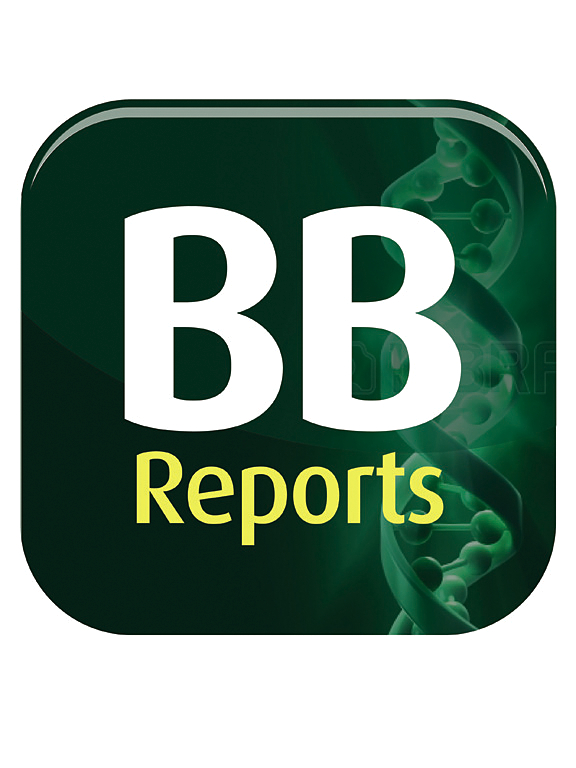TLR信号通路在多形性胶质母细胞瘤发病机制中的作用,重点是免疫治疗
IF 2.3
Q3 BIOCHEMISTRY & MOLECULAR BIOLOGY
引用次数: 0
摘要
多形性胶质母细胞瘤(GBM)是最恶性的脑肿瘤,死亡率很高。最近,在GBM治疗中,除了传统的治疗方法之外,翻译元件已经成为一种新的治疗策略。因此,toll样受体(TLR)、PI3K/Akt/mTOR、MAPK/ERK、NOTCH等信号通路近年来成为脑肿瘤的一些主要信号通路。脑肿瘤的免疫反应是由这些机制介导的。被称为tlr的蛋白质家族对自然防御机制至关重要,因为它可以识别感染和其他危险信号并作出反应。tlr在胶质瘤微环境中具有双重功能,包括它们可以最初激活支持抗肿瘤活性的先天和适应性免疫反应,其次,它们的激活也可以通过促进炎症和免疫逃避来促进肿瘤进展,因为它们在免疫细胞和肿瘤细胞上均有表达。TLR激动剂在胶质瘤的治疗中受到越来越多的关注,因为在临床研究中,一些TLR激动剂在与免疫疗法、化疗、放射疗法和免疫检查点抑制剂联合使用时显示出了生存益处。TLR激动剂最令人兴奋的用途是它们可以用作免疫调节剂,以避免剂量积累,提高其他治疗的效率,并且通过上调PD-1,增强延迟免疫检查点抵抗PD-1/PD-L1抑制。因此,使用TLR激动剂可导致PD-L1过表达,从而增强检查点抑制剂的功效并引发有效的抗癌免疫反应。在本文中,我们介绍了TLR信号系统的功能、多形性胶质母细胞瘤病因的细胞和分子因素、TLR与胶质瘤之间的联系以及它们在免疫治疗中的意义。本文章由计算机程序翻译,如有差异,请以英文原文为准。

Role of the TLR signaling pathway in the pathogenesis of glioblastoma multiforme with an emphasis on immunotherapy
The most malignant brain tumor, glioblastoma multiforme (GBM), has a high mortality rate. Recently, translational elements in GBM therapy have emerged as novel therapeutic strategies in addition to conventional treatment methods. In this way, Toll-like receptor (TLR), PI3K/Akt/mTOR, MAPK/ERK, NOTCH, and other signaling pathways have recently become some of the main signaling pathways in brain tumors. The immunological reactions to brain tumors are mediated by these mechanisms. A family of proteins known as TLRs is essential to the natural defense mechanism because it can identify and react to infections and other danger signals. TLRs have dual functions in the glioma microenvironment including that they can initially activate the innate and adaptive immune responses that support antitumor activity and secondly, their activation can also contribute to tumor progression by promoting inflammation and immune evasion, as they are expressed on both immune cells and tumor cells. TLR agonists are receiving more attention in the treatment of glioma because some of them have demonstrated survival benefits in clinical studies when used in conjunction with immunotherapy, chemotherapy, radiation therapy, and immune checkpoint inhibitors. The most exciting use of TLR agonists is that they can be used as immunomodulators to avoid dose accumulation, boost the efficiency of other therapies, and, by upregulating PD-1, reinforce delayed immune checkpoint resistance against PD-1/PD-L1 inhibition. Therefore, the use of TLR agonists can lead to PD-L1 overexpression, which in turn enhances the efficacy of checkpoint inhibitors and triggers potent anticancer immune responses. In this article, we describe the function of the TLR signaling system, the cellular and molecular elements contributing to the etiology of glioblastoma multiforme, the connection between TLRs and glioma, and their significance for immunotherapy.
求助全文
通过发布文献求助,成功后即可免费获取论文全文。
去求助
来源期刊

Biochemistry and Biophysics Reports
Biochemistry, Genetics and Molecular Biology-Biophysics
CiteScore
4.60
自引率
0.00%
发文量
191
审稿时长
59 days
期刊介绍:
Open access, online only, peer-reviewed international journal in the Life Sciences, established in 2014 Biochemistry and Biophysics Reports (BB Reports) publishes original research in all aspects of Biochemistry, Biophysics and related areas like Molecular and Cell Biology. BB Reports welcomes solid though more preliminary, descriptive and small scale results if they have the potential to stimulate and/or contribute to future research, leading to new insights or hypothesis. Primary criteria for acceptance is that the work is original, scientifically and technically sound and provides valuable knowledge to life sciences research. We strongly believe all results deserve to be published and documented for the advancement of science. BB Reports specifically appreciates receiving reports on: Negative results, Replication studies, Reanalysis of previous datasets.
 求助内容:
求助内容: 应助结果提醒方式:
应助结果提醒方式:


